 W
WAn animal pound is a place where stray livestock were impounded. Animals were kept in a dedicated enclosure, until claimed by their owners, or sold to cover the costs of impounding.
 W
WAquaculture, also known as aquafarming, is the farming of fish, crustaceans, mollusks, aquatic plants, algae, and other organisms. Aquaculture involves cultivating freshwater and saltwater populations under controlled conditions, and can be contrasted with commercial fishing, which is the harvesting of wild fish. Mariculture commonly known as marine farming refers to aquaculture practiced in marine environments and in underwater habitats, opposed to in freshwater.
 W
WAn aquarium is a vivarium of any size having at least one transparent side in which aquatic plants or animals are kept and displayed. Fishkeepers use aquaria to keep fish, invertebrates, amphibians, aquatic reptiles, such as turtles, and aquatic plants. The term "aquarium", coined by English naturalist Philip Henry Gosse, combines the Latin root aqua, meaning water, with the suffix -arium, meaning "a place for relating to".
 W
WAn aviary is a large enclosure for confining birds. Unlike birdcages, aviaries allow birds a larger living space where they can fly; hence, aviaries are also sometimes known as flight cages. Aviaries often contain plants and shrubbery to simulate a natural environment.
 W
WA nest box, also spelled nestbox, is a man-made enclosure provided for animals to nest in. Nest boxes are most frequently utilized for birds, in which case they are also called birdhouses or a birdbox/bird box, but some mammalian species such as bats may also use them. Placing nestboxes or roosting boxes may also be used to help maintain populations of particular species in an area. The modern nest box was invented by the British conservationist Charles Waterton in the early 19th century to encourage more birdlife and wildfowl on the nature reserve he set up on his estate.
 W
WA beehive is an enclosed structure in which some honey bee species of the subgenus Apis live and raise their young. Though the word beehive is commonly used to describe the nest of any bee colony, scientific and professional literature distinguishes nest from hive. Nest is used to discuss colonies that house themselves in natural or artificial cavities or are hanging and exposed. Hive is used to describe an artificial/man-made structure to house a honey bee nest. Several species of Apis live in colonies, but for honey production the western honey bee and the eastern honey bee are the main species kept in hives.
 W
WA birdcage is a cage designed to house birds as pets.
 W
WA cage is an enclosure often made of mesh, bars, or wires, used to confine, contain or protect something or someone. A cage can serve many purposes, including keeping an animal or person in captivity, capturing an animal or person, and displaying an animal at a zoo.
 W
WA domestic cat enclosure is either a permanent or a temporary structure intended to confine a cat or multiple cats to a designated space. Some cat enclosures have a secondary function of ensuring the cat's safety by keeping other animals out, such as predators of cats or the safety of other smaller animals like cat prey. Enclosures may be constructed in either an indoor or an outdoor environment.
 W
WA cattery is where cats are commercially housed. Catteries come in two varieties – boarding catteries and breeding catteries.
 W
WA cattle chute or cattle race also called a run or alley, is a narrow corridor built for cattle, sheep, pigs and other animals to travel through when being herded from one location to another that is nearby. A conventional race consists of parallel panels or fences with a space between them just wide enough for one animal to pass through comfortably without being able to turn around, thus forming the animals into a queue that only allows them to go forward. It is used for routine husbandry activities such as drafting (sorting) or loading animals via ramp or loading chute into a vehicle; placing them one at a time in a cattle crush (variations also called a squeeze chute or standing stock) for examination, marking or veterinary treatment. They are also used at packing plants to move animals into a crush designed for slaughter.
 W
WA chicken coop or hen house is a structure where chickens or other fowl are kept safe and secure. There may be nest boxes and perches in the house.
 W
WA chicken tractor is a movable chicken coop lacking a floor. Chicken tractors may also house other kinds of poultry. Most chicken tractors are a lightly built A-frame which one person can drag about the yard. It may have wheels on one or both ends to make this easier.
 W
WA dog crate is a metal, wire, plastic, or fabric enclosure with a door in which a dog may be kept for security or transportation. Dog crates are designed to replicate a dog's natural den and as such can provide them with a place of refuge at home or when traveling to new surroundings. Other common reasons for using a dog crate are for toilet training a new puppy, transporting a dog, limiting access while the dog learns rules, ensuring the dog's safety, confining a dog in locations where dogs cannot safely or legally roam freely, or giving a dog a place to go when visitors come to the house.
 W
WA doghouse, dog house, dogshed or kennel is a small shed commonly built in the shape of a house, intended to provide dogs with a sense of security and protection from various weather conditions. Numerous materials can be used, such as wood, plastic, resin, and hardboard.
 W
WA dovecote or dovecot, doocot (Scots) or columbarium is a structure intended to house pigeons or doves. Dovecotes may be free-standing structures in a variety of shapes, or built into the end of a house or barn. They generally contain pigeonholes for the birds to nest. Pigeons and doves were an important food source historically in the Middle East and Europe and were kept for their eggs and dung.
 W
WA formicarium or ant farm is a vivarium which is designed primarily for the study of ant colonies and how ants behave. Those who study ant behavior are known as myrmecologists.
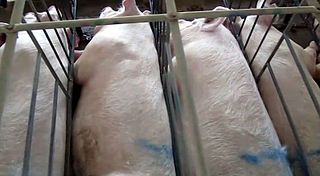 W
WA gestation crate, also known as a sow stall, is a metal enclosure in which a farmed sow used for breeding may be kept during pregnancy. A standard crate measures 6.6 ft x 2.0 ft.
 W
WA glirarium is a terracotta container used for keeping edible dormice. These animals were considered a delicacy in the Etruscan period and later in the Roman Empire.
 W
WA goat tower is a multi-story decorative goat house, modeled on a European garden folly, an early example of which was built in Portugal in the 19th century. The first goat tower was built at Aveleda, a winery in Portugal's Vinho Verde region. Since 1981, several other goat towers have been built in South Africa, Norway, the United States, the United Kingdom, and Argentina; these include three at other wineries. The towers typically are multi-story with climbing ramps spiralling the exterior and often become tourist attractions.
 W
WHabitrail is a brand name for a hamster cage made by the Hagen corporation. It is a series of translucent plastic tubes and "houses" for use in home terrariums, designed specially for hamsters. The design of the Habitrail is modular and can be configured however the owner likes, as well as disassembled for cleaning. The Habitrail is meant to mimic the habitat of the animal in question, usually a warren, or series of tunnels. The mascot for Habitrail is "Herbie the Hamster", who even has a video game based on him called Habitrail Hamster Ball produced by Data Design Interactive in 2005 and released for the PS2, and the PC.
 W
WA hamster cage is a cage designed to house hamsters. Hamster cages need to be at least 450 SQ inches of floor space or bigger like the one showed.
 W
WA herpetarium is a zoological exhibition space for reptiles and amphibians, most commonly a dedicated area of a larger zoo. A herpetarium which specializes in snakes is an ophidiarium or serpentarium, which are more common as stand-alone entities. Many serpentariums milk snakes for venom for medical and scientific research.
 W
WA hive frame or honey frame is a structural element in a beehive that holds the honeycomb or brood comb within the hive enclosure or box. The hive frame is a key part of the modern movable-comb hive. It can be removed in order to inspect the bees for disease or to extract the excess honey.
 W
WA honey super is a part of a commercial or other managed beehive that is used to collect honey. The most common variety is the "Illinois" or "medium" super with a depth of 65⁄8 inches, in the length and width dimensions of a Langstroth hive.
 W
WA hutch is a type of cage used typically for housing domestic rabbits. Other small animals can also be housed in hutches.
 W
WInvisible Fence Inc. is a company that designs pet fences for cats and dogs. Manufactured and distributed by Radio System Corps, the company sells wireless and fenceless systems that revolutionized pet containment when it was first introduced in 1973. Its best known product consists of an underground wire installed by an Invisible Fence employee or franchisee around the perimeter of an area, a collar with an integrated transmitter that provides a signal to the pet when it approaches the perimeter, training provided by Invisible Fence and additional training instructions for the pet owner.
 W
WA kennel is a structure or shelter for dogs or cats. Used in the plural, the kennels, the term means any building, collection of buildings or a property in which dogs or cats are housed, maintained, and bred. A kennel can be made out of various materials, the most popular being wood and canvas.
 W
WA cattle crush, squeeze chute, standing stock, or simply stock is a strongly built stall or cage for holding cattle, horses, or other livestock safely while they are examined, marked, or given veterinary treatment. Cows may be made to suckle calves in a crush. For the safety of the animal and the people attending it, a close-fitting crush may be used to ensure the animal stands "stock still". The overall purpose of a crush is to hold an animal still to minimise the risk of injury to both the animal and the operator while work on the animal is performed.
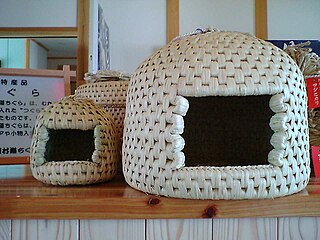 W
WNeko chigura (nekochigura) or Neko tsugura (nekotsugura) is a kind of cat house made of straw in Japan. It is a folk craft of Sekikawa-mura, Niigata-ken, or Akiyamago. It is called "Nekochigura" in Sekikawa, and "Nekotsugura" in Akiyamago (ja).
 W
WA nest box, also spelled nestbox, is a man-made enclosure provided for animals to nest in. Nest boxes are most frequently utilized for birds, in which case they are also called birdhouses or a birdbox/bird box, but some mammalian species such as bats may also use them. Placing nestboxes or roosting boxes may also be used to help maintain populations of particular species in an area. The modern nest box was invented by the British conservationist Charles Waterton in the early 19th century to encourage more birdlife and wildfowl on the nature reserve he set up on his estate.
 W
WA paddock is a small enclosure for horses. In the United Kingdom, this term also applies to a field for a general automobile racing competition, particularly Formula 1.
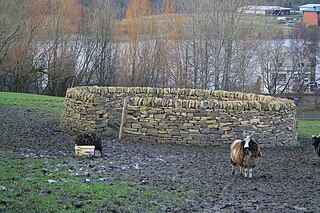 W
WA pen is an enclosure for holding livestock. It may also perhaps be used as term for enclosure for other animals such as pets that are unwanted inside the house. The term describes types of enclosures that may confine one or many animals. Construction and terminology vary depending on the region of the world, purpose, animal species to be confined, local materials used and tradition. Pen or penning as a verb refers to the act of confining animals in an enclosure.
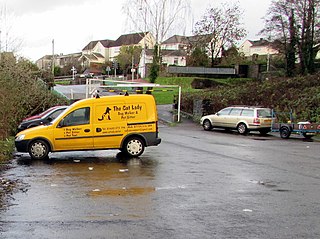 W
WA pet taxi is a type of transportation taxi service that transports various pets. Some pet taxi services also provide pet ambulance, animal boarding and grooming services. Some pet sitting companies may also offer pet taxi services. Some pet taxis charge by the mile, while others may offer a flat rate for various trips. Less commonly, some pet taxi services may offer long-distance pet transportation, such as a trip from New York City to Florida.
 W
WA pinfold was a structure into which straying animals were placed until they were retrieved by their owner on payment of a fine. Other terms for the structure were penfold or pound. These names were derived from the Old English words pund (pound) and fuld (fold). In Cheshire, most of these were square or circular stone structures, although there is a circular pinfold in Henbury. There is evidence of the existence of at least 153 pinfolds in Cheshire, although, as of 2010, only eight of these remain in the current county of Cheshire. There are also the remains of four other pinfolds in the county.
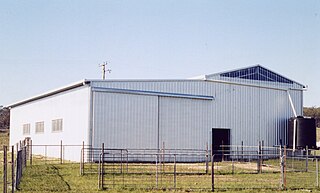 W
WShearing sheds are large sheds located on sheep stations to accommodate large scale sheep shearing activities.
 W
WA stable is a building in which livestock, especially horses, are kept. It most commonly means a building that is divided into separate stalls for individual animals and livestock. There are many different types of stables in use today; the American-style barn, for instance, is a large barn with a door at each end and individual stalls inside or free-standing stables with top and bottom-opening doors. The term "stable" is also used to describe a group of animals kept by one owner, regardless of housing or location.
 W
WA sty or pigsty is a small-scale outdoor enclosure for raising domestic pigs as livestock. It is sometimes referred to as a hog pen, hog parlor, pigpen, pig parlor, or pig-cote, although pig pen may refer to pens confining pigs that are kept as pets as well. Pigsties are generally fenced areas of bare dirt and/or mud. "Sty" and "pigsty" are used as derogatory descriptions of dirty, messy areas. There are three contributing reasons that pigs, generally clean animals, create such a living environment:Pigs are voracious eaters and will eat all the plants in the enclosure until there is nothing left to control erosion. The pig will naturally root and dig for food in the enclosure, further disturbing the soil. Pigs do not regulate temperature by sweating which means that they must be provided with water or mud in which they can control their own body temperature.
 W
WA swan pit is a water-filled enclosure where swans were fattened and eventually killed for human consumption.
 W
WThe transportation of animals is the intentional movement of animals by transport. Common categories of animals which are transported include livestock destined for sale or slaughter; zoological specimens; laboratory animals; race horses; pets; and wild animals being rescued or relocated. Methods of transporting animals vary greatly from species to species.
 W
WUrban aquaculture is the aquatic farming of organisms, including all types of fish, cuttlefish, mussel shrimp and aqua plants within the urban environment. In essence, urban aquaculture is the practice of aquaculture in an urban, or urbanising, environment. Urban aquaculture systems can be associated with a multitude of different production locations, species used, environment, and production intensity. The use of urban aquaculture has increased over the last several years as societies continue to urbanise and demand for food in urban environments increases. Methods of production include recirculating systems; land-based culture systems; multifunctional wetlands; ponds, borrow pits and lakes; cages and culture-based fisheries. Most production in urban environments will include either extensive or intensive, compared to aquaculture in general which is normally semi-intensive.
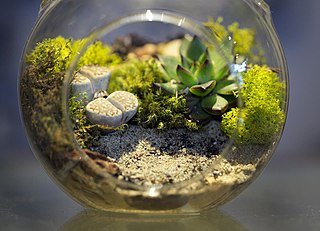 W
WA vivarium is an area, usually enclosed, for keeping and raising animals or plants for observation or research. Often, a portion of the ecosystem for a particular species is simulated on a smaller scale, with controls for environmental conditions.